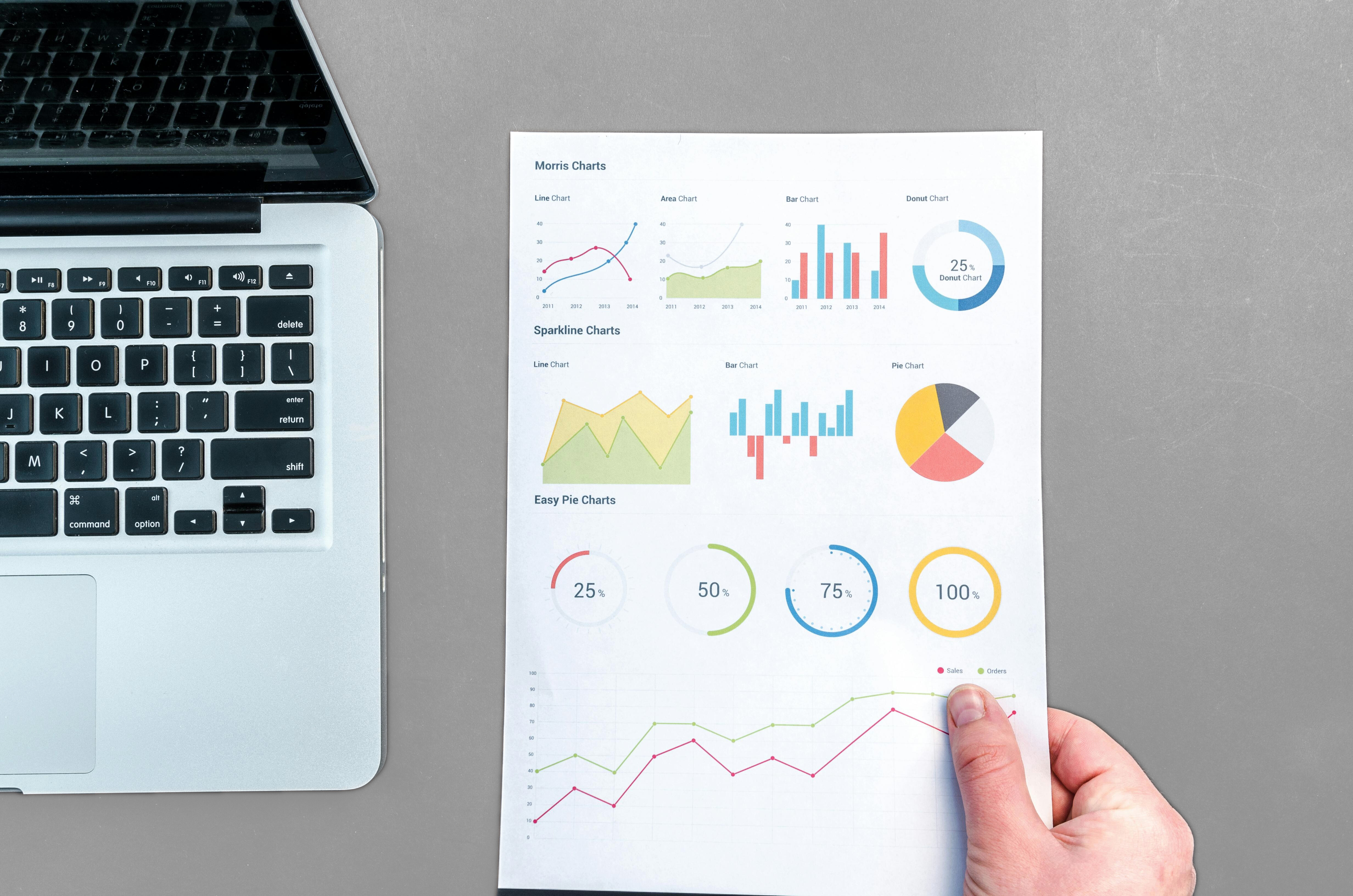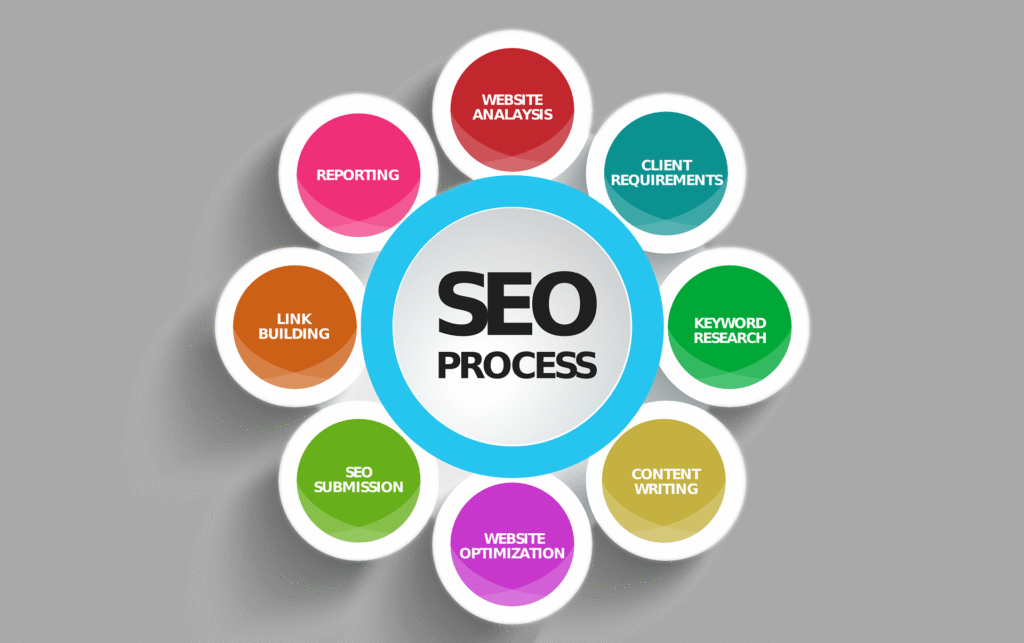Link building is an important part of SEO ranking on Google. The number of backlinks a website gets is one of the metrics that quantifies its authority according to Google standards. This is true because websites will likely link to other sites with quality content and information. Search engines use this to determine a website’s authority and rank it accordingly. Notably, the higher a website ranks, the more successful it becomes. More details on this concept are captured below.
These link-building and backlinks statistics are vital for SEO optimization and high ranking. While no particular strategy guarantees users the top ranking spots, these stats reveal important steps that could improve your site ranking.
Vital Backlinks and Link Building Statistics and Facts in 2025
Backlinks and Link Building Costs Statistics 2025

1. 46% of companies will spend up to $10,000 on SEO link building. That’s quite an impressive budget for linking buildings, highlighting its importance.
1. Most marketers spend between 0% and 10% of their marketing budget on backlinking. Although a small percentage of marketing budgets go to backlinking, it is still very important for a website’s success.
3. Over 40% of marketers predict that the cost of adding links will increase in a few years. These significant portions of marketers realize that competition will increase the cost of backlinking.
4. High authority backlinks cost up to $1000 and above per link. So, backlinking with quality is quite expensive but produces admirable results. The higher the quality of the link, the more expensive it will be.
5. Low-authority backlinks cost between $100 and $300 per link. These links are cheaper but do not yield the same results as high-authority backlinks. Nevertheless, they are better than none at all.
Link Building Opportunities and Interesting Statistics

6. 94% of content on the internet is never backlinked. So this limits the content in SEO rankings and makes it more difficult to locate with search engines.
7. 41% of companies believe that backlinking is the biggest challenge faced in terms of SEO ranking efforts. These companies see backlinking as an activity that requires the most attention for a website to enjoy healthy SEO rankings.
8. 15.6% of companies do not believe that backlinking affects their brand authority. Also, 5% do not regard backlinking as an important SEO strategy. This confirms that some people still do not accept backlinking, although it is very important.
Link Building Strategies and Statistics

9. 60% of businesses outsource their link-building strategy to an SEO expert. Comparatively, only 30% do it themselves since most business owners focus on other aspects of growth and marketing.
10. Reciprocal backlinking is very important for website success. This method exchanges site owners who refer each other by posting their links. 43.7% of the top-ranking pages on the Internet rely on links that refer users back to their websites.
11. Longer articles between 3,000 and 7,000 words require 77.3% more backlinks than short-form content. Generally, longer content requires more backlinks to attract more traffic and optimize the website’s SEO.
12. 53% of marketers rely on infographics to get backlinks. These data sheets make link-building more effective. They are often presented as charts or diagrams.
13. Including internal links to a website can boost its SEO rankings. Many marketers are aware of this. So, 51% of marketers prefer to add two or three links to each post on their websites to improve their ranking.
14. List-style articles have the highest number of links (6.19) compared to other content forms. Thus, they will likely have an advantage over others in SEO rankings.
Who builds links?

15. 73.5% of link builders create fewer than ten monthly links. This confirms that the demand for link building is still not high enough. Hence, most websites face SEO struggles.
16. Top link builders develop up to 3.47 times more links than beginners. So, the experienced hands build more links than the beginners with little or no experience.
17. Agencies record the largest population of experienced link builders. 59.4% of these link builders have over five or more years of experience.
18. The average website owner builds a minimum of 9 links each month, and they build almost 10 links each month, which is above 100 links in a year.
19. 42% of SEO professionals spend equal time building internal and external links. These builders give internal and external links equal priority.
Link Building and Its Impact On Search Rankings

20. On average, it takes 3.1 months for the impact of links to be observed on search rankings. While it takes some time, eventually, link building has a positive impact on SEO rankings.
21. 89.2% of link builders believe that it takes between one and six months to notice the impact of links on search rankings. So, there is no definite timeframe on when links will optimize SEO rankings. However, at some point, having links will be highly beneficial for SEO purposes.
22. 65.4% of SEO experts believe that domain authority is more crucial than the number of links on the target page. Domain authority is also important for search rankings; over 60% of SEO experts believe this.
23. The page ranked number one on a Google search has 3.8 times more backlinks on average than other pages. This confirms the importance of backlinks to ranking and a website’s overall performance.
Link Building Tactics Relevant in 2025 and Beyond

24. Guest posting is the most popular link-building tactic. Around 64.9% of link builders depend on guest posting to spread their links across several websites.
25. 46.3% of link builders often use Help a Reporter Out (HARO). HARO connects bloggers and journalists with relevant sources of information. So, link builders also rely on this tool to optimize their results.
26. 51.6% of link builders rely on link exchanges to drive website traffic. As more users become aware of link exchanges, they could become even more relevant in 2025.
27. 43.7% of top-ranked pages on Google have some reciprocal links. The top-ranked sites also collaborate with other websites with their backlinks posted on pages and vice-versa.
28. Only 17.7% of link builders rely on Digital PR to acquire links. This makes Digital PR the least-used link-building tactic, although it works for some websites.
29. Only 6% of website owners focus on digital PR link building, so this style is not very popular among site owners, and only a small percentage are bothered by it.
30. Internal SEOs and agencies are three times more likely to do digital PR. SEO experts within an organization focus on Digital PD despite its low popularity since they would explore multiple options to succeed.
31. Digital PR becomes 433% more popular as link-builders become more experienced. More experienced link-builders will rely on digital PR over the years than new builders who believe in other methods.
32. Link builders rate creating link-worthy content as the most important link-building strategy. Content quality is also essential, not just backlinking. So, link builders rate quality content as vital for obtaining the best results.
33. “What” posts, “Why” posts, and infographics receive 25.8% more links than videos and “How-to” posts. These posts often carry more backlinks than media, such as videos, since they are very popular in search queries.
34. 89% of marketers produce their content with the ultimate goal of link building. So, most content is crafted to support backlinks as a smart SEO strategy.
35. 31% of marketers run outreach campaigns to build links on new content. These campaigns run for up to four weeks after the new content is launched. The ultimate goal is to improve backlinks.
36. . 19.9% of link builders actively buy domains and redirect them to acquire links. Many also buy domains and link them to their link-building efforts. b
37. On average, an outreach email takes eight days to convert into a backlink. An email sent out to customers will take a little over a week to convert to a backlink that brings traffic to the website.
38. Using a recipient’s first name for the initial outreach increases the chances of acquiring a backlink by 50%. People are more comfortable with what they are familiar with, so addressing potential customers by their first name boosts the chances of acquiring a backlink by 50%.
39. Sending follow-up emails in link-building campaigns boosts the chances of acquiring more links. Remarkably, 40% more links are acquired through this method.
Social Media and Link Building Efforts

40. 61.7% of link builders rely on social media channels for some of their outreach. Due to its global reach, social media is a powerful tool for link-building, so most link-builders use social media channels in combination with other methods.
41. Link builders gain an average of 22% extra monthly links through social media outreach. Social media boosts the overall reach of link builders and is a very effective tool.
42. 23.5% of link developers rely on Facebook for link development outreach. These builders also use Facebook to find users’ contact information for a more focused marketing approach.
43. 17.3% of link builders rely on LinkedIn for link-building outreach and discovering contact information. LinkedIn is the job marketplace; link developers use it to find contact information.
44. Widely shared content receives 2-5 times more organic traffic and backlinks. So, sharing content on social media will likely boost organic traffic to the original site and increase backlinks.
Costs Associated with Link Building

45. Experienced link builders are 49% cheaper to hire on a cost-per-link basis. These link builders know how it works, so they might be relatively cheaper to hire for website owners.
46. 78.1% of SEOs record satisfactory Return On Investment (ROI) from link building. So, link building is quite lucrative for SEO purposes and gives exciting yields.
47. The Average cost of a paid link is $83. So, a paid link is below $100 and still quite affordable for most website owners.
48. In-house SEOs will pay 75% more for links than niche site owners. SEO experts will willingly pay more for links because they know their value.
49. Paying for links only produces an extra two links per month. This is much better than those who do not pay for links.
50. Paying for links increases average link builders’ budgets by 42.85%. So, based on their importance, link payments can result in a significant increase in the budget.
Types of Links

51. 89.1% of link builders believe that no-follow links have a major impact on search rankings. So, most link builders believe that no-follow links affect search rankings since they basically tell search engines to ignore them.
52. Google is currently working on the “no-follow” feature for backlinks to increase the value of users’ backlink profiles.
Link Quality Statistics

53. Low relevance, poor SEO metrics, and bad neighborhoods are vital caution sites for link builders. Link builders consider these three metrics as red flags on the quality of a link.
54. Only 5.2% of link builders consider the presence of “Write for us” on a page to be a major red flag. Some websites add this information to attract writers, but only a small number of link builders consider it a potential red flag.
Current Link Building Trends

55. About 61.7% of SEO professionals say link building is getting more expensive. With more tools and innovations coming out, link building is getting quite expensive compared to recent years.
56. 52.7% of SEO experts report that link building requires more time than before. So, the link-building process is getting more complex and requires time for a quality output.
57. 65.2% of SEOs believe that links will have a similar or higher impact on rankings in 5 years. Therefore, most link builders believe that links are vital for SEO purposes.
58. 1.2% of SEOs believe that links will lose impact and relevance in five years. This minority believes that links will likely be outdated and lose relevance in SEO rankings.
59. 80% of SEOs believe that links will still affect rankings in five years. So, most link builders believe that the impact of links on search engine rankings will still be relevant in five years.
Conclusion
These statistics prove that links are still valuable for ranking and boosting traffic to a website. Most link builders rely on guest posting as their best tactic to promote backlinks. Also, it is quite obvious that experience in SEO and link building is vital, as the most experienced link builders develop around 25 links each month.
Overall, it is cheaper to hire experienced link builders since most people view link building as the most difficult part of SEO. So, link building will likely remain relevant in the future, although it could become outdated if some other new and more effective method is introduced.
FAQs
The number of backlinks needed depends on several factors, such as domain authority and SEO optimization. Some of the top-ranked sites on Google only have a few backlinks, while others have more than 1000. The average backlink count for most sites is 300 links, which you can aim for to rank high on Google.
Securing links from high-authority sites can improve your domain authority. Quality is far more valuable than quantity. It also eliminates spam links and improves the website’s content for users.
The number of backlinks you can create daily is not restricted. Nevertheless, avoid linking to low-quality sites that can affect your Google rankings. If you generate good content, the number of links connecting to your website will not be a problem.
Since backlinks influence Google rankings, they will remain relevant for SEO purposes in 2025 and beyond. Quality backlinks developed by experts will boost website traffic and generate good revenue.
SEO is simply improving your website and increasing its visibility to search engines like Google. Due to the fierce competition for visibility and relevance among websites, SEO is very important.
